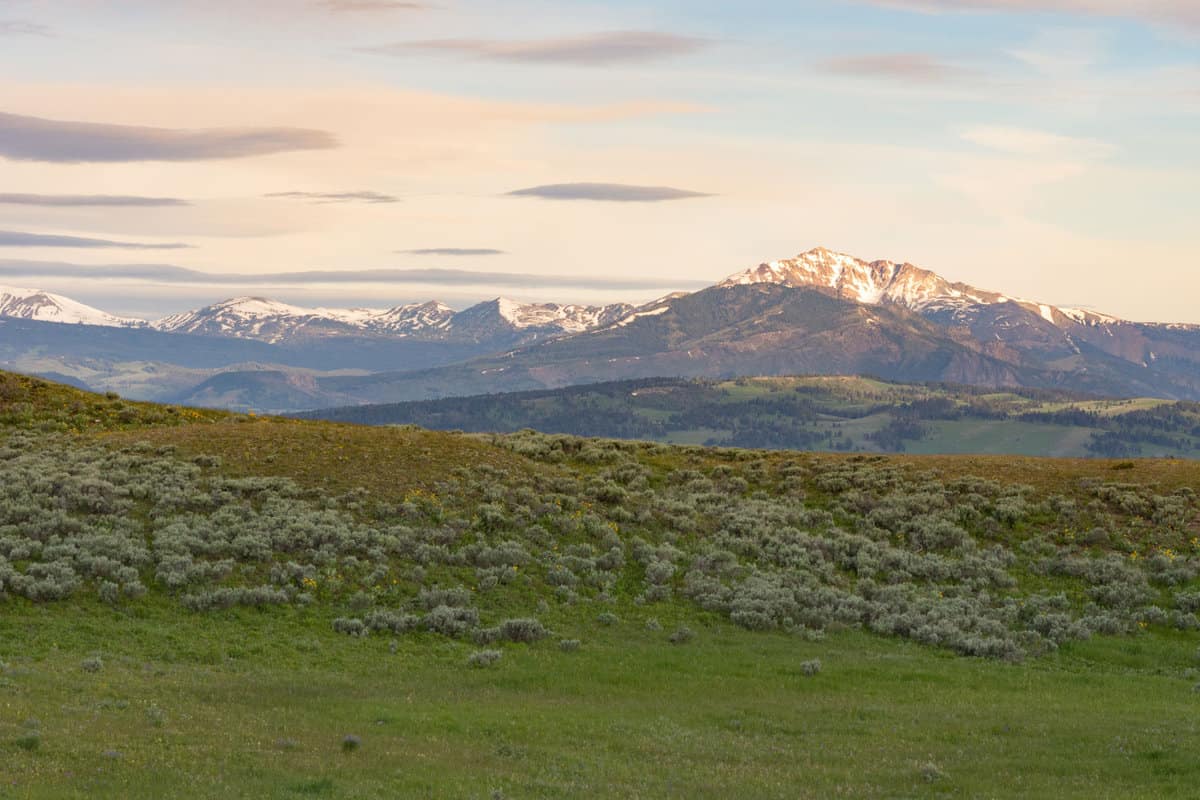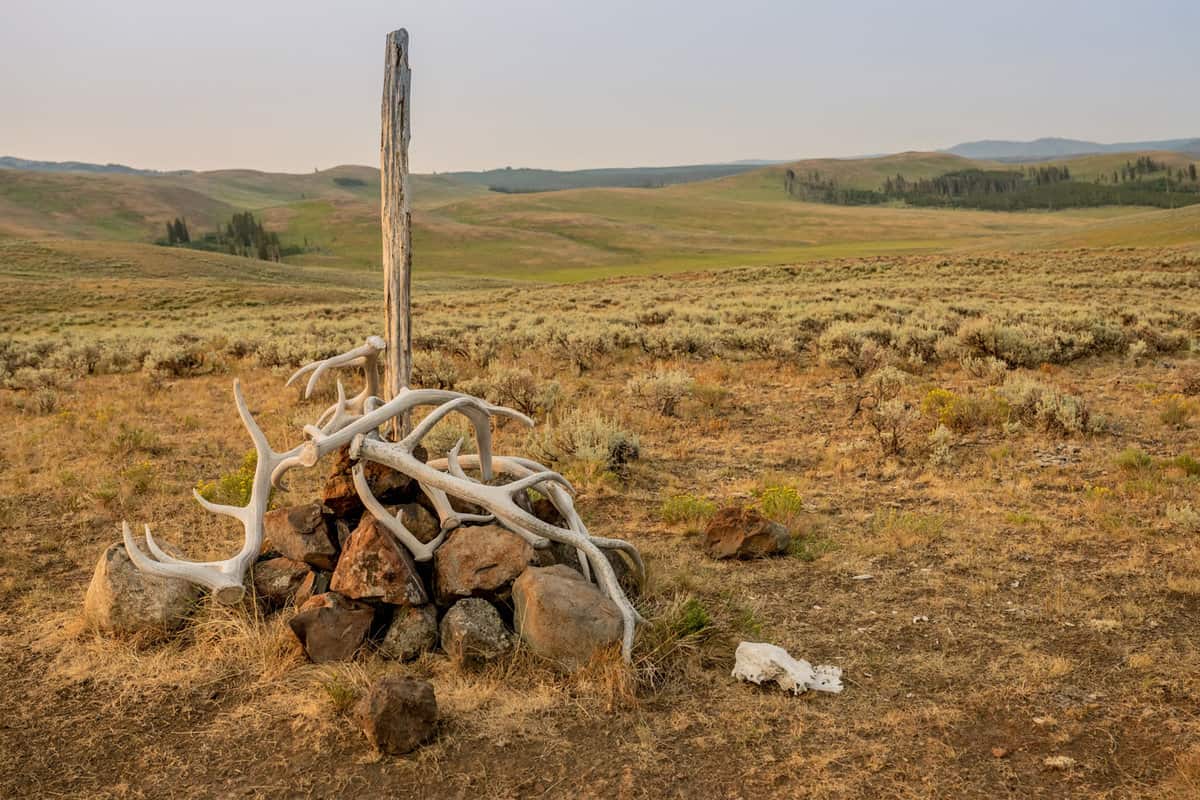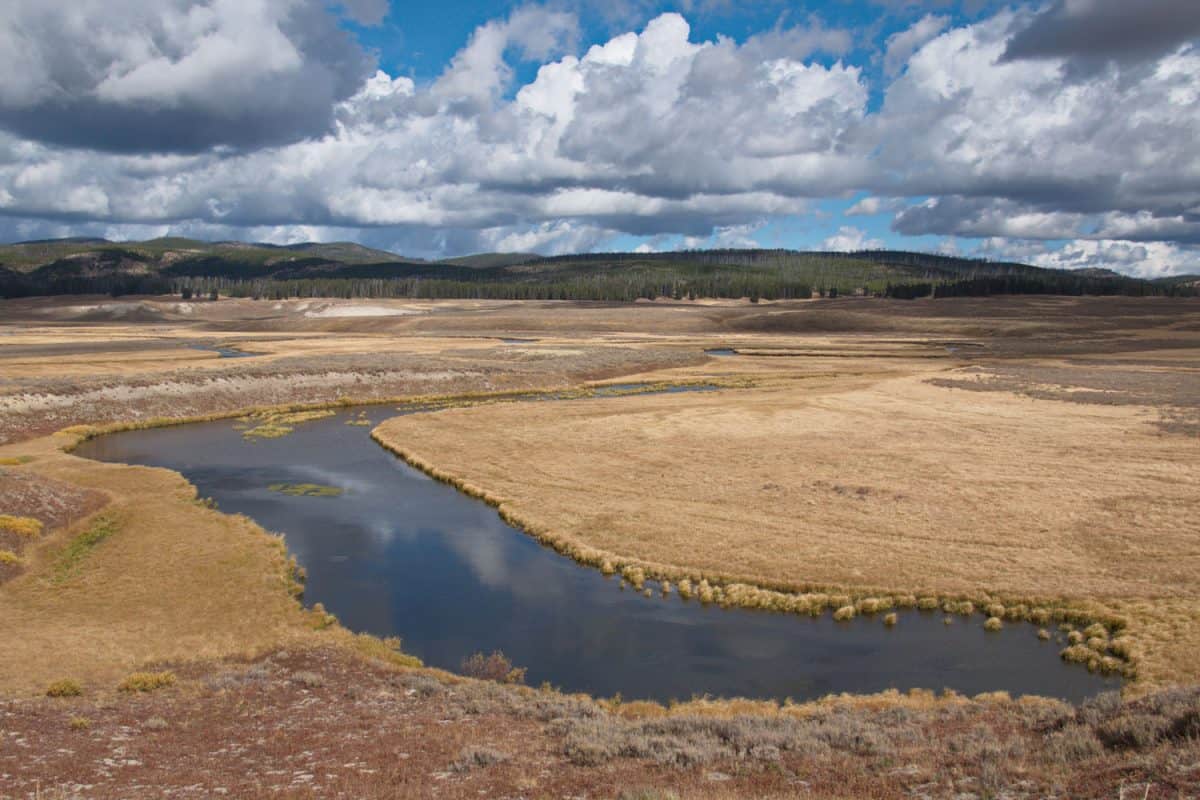Spotting wolves in Yellowstone is an experience like no other, offering glimpses into the wild heart of one of America's most iconic national parks.
There's a thrill in seeing these elusive predators roam freely, showcasing nature in its purest form.
If you've ever wondered where to find these magnificent creatures and witness the dynamics of their packs, you're in the right place.
We've compiled a list of the best spots in Yellowstone where you're most likely to encounter these majestic animals.
So, let's get into the world of wolves and the magical landscapes they call home!
Top Wolf-Watching Spots in Yellowstone
There are multiple locations throughout the park where you have a good chance of spotting wolves. Here are some of the most popular spots:
1. Lamar Valley
Located a short distance from Elk Horn Lodge, Lamar Valley is Yellowstone's prime wolf-watching hub, housing four of the park's eight wolf packs: Junction Butte, Rescue Creek, 8 Mile, and Wapiti Lake.
After reintroducing 41 gray wolves between 1995 and 1997, the valley now teems with around 94 wolves, making it the world's premier location for observing these majestic creatures.
The stark contrast of winter snow against the wolves' dark coats, especially when they follow migrating elk herds, offers an unparalleled viewing experience.
However, for those willing to brave the cold, witnessing wolf pups during the mating season in February and March is a sight to behold.
To maximize sightings, it's advised to be in position by 5:00 a.m. in summer or 7:00 a.m. in winter, as wolves are most active during dawn and dusk.
2. Hayden Valley
Steeped in open landscapes and captivating beauty, Hayden Valley is a historic ground for wolf activity and remains a top spot for enthusiasts.
In 2003, the valley drew attention with the sightings of a distinctive white wolf.
By 2004, this wolf partnered with a formidable gray wolf, cementing the formation of the renowned Hayden Valley pack.
In recent years, the valley has become a hub for wolf-watchers, with frequent sightings of the Canyon pack, which now occupies the territory.
The white alpha female of the Canyon pack, believed to have roots in the original Hayden Valley pack, has become a symbol of resilience and continuity in this prime wildlife-watching location.
3. Slough Creek
Slough Creek is a traditional denning site for the Junction Butte Pack.
One of the most observed in Yellowstone, this pack has chosen this area year after year to give birth to their pups.
It offers a strategic location with ample prey and protection for young wolves.
However, wolf enthusiasts should note that while the pack dens here, the pups usually do not emerge and become visible until late May.
This makes the spot particularly active regarding wolf sightings during that period.
4. Blacktail Plateau
Blacktail Plateau is a significant hotspot for wolf activity. It's a potential denning site for the Eight Mile and Lupine Pack wolves.
The Rescue Creek Pack, which split from the Junction Butte Pack, has also been frequently observed in this area.

The Lupine Pack, separated from the Eight Mile Pack, primarily roams around the Blacktail Plateau.
The terrain, abundant prey, and relative seclusion make it an ideal location for multiple packs.
5. Specimen Ridge
Specimen Ridge is another territory frequented by the Junction Butte Pack.
This elevated ridge provides the wolves with a vantage point, useful for both hunting and surveillance against potential threats.

The ridge's unique terrain and the surrounding areas are abundant in prey, making it a preferred location for the pack.
Sightings here can be fascinating, as the wolves use the terrain to their advantage while hunting.
Visitors to Specimen Ridge should be prepared for breathtaking views coupled with potential wolf sightings.
6. Soda Butte Valley
The Shrimp Lake Pack, which includes wolf 1228F, her mate, and their pups, predominantly occupies Soda Butte Valley.
The pack, though small, is very active in this region, making it a hotspot for sightings.
The valley's environment, rich in prey and with suitable denning sites, makes it a chosen territory for this pack.
Given the pack's smaller size, their interactions and hunting strategies differ slightly, offering a unique observation experience.
The northeast location of the valley also ensures fewer human disturbances, increasing the chances of natural wolf behavior sightings.
7. Mt. Everts near Mammoth Hot Springs
The Lupine Pack, a breakaway from the Eight Mile Pack, has chosen the area around Mt. Everts near Mammoth Hot Springs as their primary territory.
The region's varied terrain and rich biodiversity provide an excellent habitat for the pack.
Sightings here often involve observing the pack's dynamics, hunting strategies, and interactions.
Given its proximity to Mammoth Hot Springs, it's easily accessible for visitors, making it a popular spot for wolf-watching.
The pack's regular activity in this region ensures frequent and memorable sightings.
8. Pelican Valley
Pelican Valley is the traditional territory of the Mollies Pack, one of Yellowstone's oldest wolf packs.
The valley's rich ecosystem and strategic location have made it the preferred territory for this pack for years.

Given the pack's history and dominance in the region, sightings here are rich in wolf interactions, hunting strategies, and pack dynamics.
The Mollies Pack's size is estimated to be between 8 to 11 wolves, making their group interactions particularly intriguing.
The valley's layout and biodiversity ensure frequent and memorable wolf sightings.
9. Bechler Region
The Bechler region, located in Yellowstone's southwest corner, is the remote territory of the Bechler Pack.
This area's inaccessibility makes it a less frequented spot for wolf watchers, ensuring minimal human disturbances.
The pack's numbers are not well-documented, given the region's remoteness.
However, those who venture into this region are rewarded with sightings of the Bechler Pack in a natural, undisturbed habitat.
The region's pristine environment and the pack's elusive nature make any sighting here truly special.
Gear To Maximize Wolf Sightings
Spotting wolves in Yellowstone often requires the right gear, especially during winter when they blend into the snowy landscapes.
Bringing high-powered binoculars or a spotting scope allows you to spot them from a safe distance.
A camera with a long lens also aids in close-up photography.
Prepare for their camouflage and elusive nature by packing the proper viewing equipment.
Responsible Guidelines For Wolf Watching
Following park guidelines and proper etiquette is essential when observing Yellowstone's wolves.
Always maintain at least 100 yards distance, never approach known den sites, and respect area closures due to wolf activity.
Check the National Park Service's wolf-watching safety tips and closure postings before your visit. Following the rules ensures both you and the wolves stay safe.
Ensuring Safe Encounters with Yellowstone's Wolves
In the vast expanse of Yellowstone, observing wolves in their natural habitat offers a rare glimpse into the raw beauty of nature.
However, while these moments are captivating, it's imperative to prioritize safety and adhere to park guidelines.
Maintaining a safe distance from these wild animals is essential, as interactions with humans can disrupt their natural behaviors and pose risks.
Respecting these magnificent creatures and their territory ensures the safety of both the wolves and visitors.
By observing responsibly, the awe of such encounters is preserved for future generations.
Beyond Yellowstone's wolves, America boasts diverse wildlife. For more on these incredible creatures, see the articles below.
7 Terrifying Florida Wildlife Species: Unforgettable Encounters on Your Visit
17 Iconic Animals to Spot in the Florida Keys
